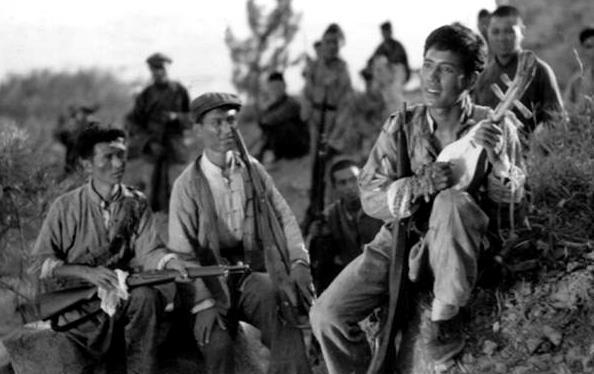The sun in the west is about to set, and the lake is quiet...", this euphemistic "Play My Beloved Earth Pipa" is an episode of the 1950s movie "Railway Guerrilla", and now more than sixty years later, this song and movie have become good memories, when you think of this song or movie, you have thought about this question, where did the guerrillas who were really active in the anti-Japanese battlefield go later?

Shandong Zaozhuang coal mine reserves are huge, has provided a rich energy supply for China's modern industrial development, after the outbreak of the War of Resistance, the Japanese army occupied the local coal mines, plundering mining, the coal mined needs to be transported by rail, in order to more effectively hinder the Japanese army's plunder of coal mines, on January 25, 1940, the Lunan Military Region Railway Brigade, which is also known as the railway guerrilla.
This team, led by captain Hong Zhenhai and political commissar Du Jiwei, only had more than 300 people at the most, not to mention the small number of people, but the achievements made were incomparable.
At that time, the Japanese army also knew that the strategic significance here was great, and there were many Japanese puppet troops stationed in the local area, but there were always enemy dense places on the surrounding hundreds of miles of railway lines, and the well-armed railway guerrillas often flew on the train to intercept and attack the enemy's supplies and personnel, just like flying tigers, so later the local people called it "Flying Tigers".
In the late autumn of one year, in order to solve the problem of winter clothes for the Lunan troops, the railway brigade, together with the fraternal troops, successfully intercepted the Japanese army material trucks at Tanghu Station, seized 1200 cotton cloths, more than 500 sets of military uniforms, and a large number of other uniformed materials, which solved a major problem for the logistics of the anti-Japanese troops in Lunan.
In addition to fighting the Japanese army on the railway line, the railway guerrillas also had a very important task, that is, to escort the cadres who passed through the enemy-occupied areas safely; some important figures of our party, such as Comrade Shaoqi, Chen Yi, Luo Shuai, Xiao Hua, etc., were escorted by them to safely cross the Jinpu Railway.
After the victory of the War of Resistance Against Japanese Aggression, this heroic contingent completed its historical mission, and at the end of 1945, the team was reorganized and formed into the later Lunan Railway Bureau, with Liu Jinshan, the captain of the brigade, as deputy director of the Railway Bureau. Later, due to the needs of their work, they were reorganized into the 139th Regiment of the 47th Division of the LuzhongNan Column and went to the front line to fight.
After the founding of the People's Republic of China, the 139th Regiment followed the troops to the eastern coast of Zhejiang, participated in the landing battles of Jiguan Mountain and DaxiaoluShan, and won the battle. Later, they took on coastal defense tasks here, and over time, the old railway guerrillas who had experienced hundreds of battles were retired one by one because of age problems, but their spirit was passed on from generation to generation among the new team members. Until 1993, the troops also entered the coastal defense battalion of the Yancheng Military Sub-district, and to this day, this legendary unit is still guarding the motherland on the Chinese sea defense line.
Li Hongjie, who joined the railway guerrilla group at the age of 13, was the youngest of the members of the team at that time, and now as the last member of the railway guerrilla, the old man is very healthy, and as soon as a reporter interviewed, he is nearly 90 years old and still has the interest to tell the other party about the glorious years of the railway brigade.